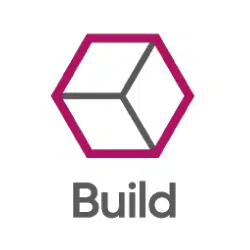Here we explain the main factors that can affect the cost of setting up a new dental practice. You may also want to try our online cost estimation tool.
Type Of Building
Low Cost:
- Commercial units with existing false floors, lots of parking, sufficient services, and easy access.
- Newly built empty shells with existing services, bare walls, and easy access.
- Buildings with little or no rip-out needed. Removals and rip-outs often uncover unknowns, such as hidden issues like rotting floor joists or a poor state of walls.
Mid Cost:
- Shop units on high streets. These often have an element of removals and are therefore bring the unknown.
- Old buildings. More chance of unknowns.
Basements. These can be challenging to work around with fire, ventilation, dampness, and service requirements and can create a lot of additional costs. - Split-level practices. Working across several levels is slower, making delivery of materials harder and increasing complexity in complying with fire regs.
- Significant structural works needed, or major services missing (for example insufficient incoming
power, or drainage).
High Cost:
- All of the above but on larger scales.
- Raised access floors are needed.
- Need for complete MVHR systems for compliance.
- Listed buildings.
- Challenging geographical locations with little or no access to parking, and waste-away service.
- Very poor condition buildings with subsidence, damp.
- Need for replacement shopfronts.
Project Scope
The project scope, whether it is a surgery expansion or a new squat practice, is largely dictated by the building type so closely links with the above points.
Generally, the less invasive and less disruptive the work needs to be, the less it will cost.
For example, if a building has existing rooms that are being turned into surgeries, this will cost significantly less than if walls are being demolished and new partitions constructed.
If you need to reduce costs for budgeting control, consider:
- Having a scope that is straightforward and minimally invasive to the building.
- Work with someone who is experienced in the building trade and can be trusted.
- Consider phasing the work into stages that can be completed at a later date.
- Consider what type of work really adds value to a practice. For example, a high-quality reception/waiting area will add a lot more value than having a large store room.
Equipment
The type and quantity of dental equipment will have a significant impact on costs.
It’s imperative you seek advice from a trusted dental engineering advisor as going for basic, low-cost equipment may not be the best value solution in the long term. There is no one-size-fits-all approach, every case is different.
Some considerations:
- Consider fitting out one or two rooms initially and plumbing rooms ready for future expansion.
- Think carefully about what is important to the users and patients. Retaining good staff and good patient experience is the priority.
- Be careful not to over-specify on options ‘just because you can’. Keep some capital or finance by for later if you can.
- Well worth visiting showrooms and exhibitions to see the equipment before purchasing. Anglian Dental can facilitate this.
- Invest in good quality and reliable plant equipment (especially suction pump and compressor) with a backup facility and changeover.
- Ensure you have planned for future expansion and seek specific technical advice. It is a false economy to buy the cheapest available!
- Consider 10-year lifecycle costs, including service kits.
- Purchase equipment that won’t tie you to one provider ongoing for all the maintenance.
Finishes & Specification
Obviously, the more fancy and design-led the specification and finishes, the higher costs will be.
In most cases, creating a ‘Wow’ appearance to attract new patients is a priority as is retaining good staff. This all needs to be balanced with costs. There are some key suggestions and advice we can offer:
- Consider carefully where you want to make an impact. For example, spending a lot on a bespoke-made corian reception desk may pay dividends in a boutique private practice but be an overkill in an NHS squat practice.
- Keep it simple where you can. Staff rooms, decon, surgeries, WCs. Use basic finishes and add a feature with wall murals, colours, and feature cladding.
- Interior designers are worth considering for the right type of practice. Used correctly, they will set a practice apart from the competition and create a statement. When using a standalone designer, be aware that their input can lead to costly materials and concepts being selected. It is recommended to have the interior design pragmatically considered by an experienced surgery build team. Seek their advice on the most cost-effective ways of achieving desired outcomes.
- Know what you want and have the designs 100% finalised and signed off before work commences on site. Changes, variations, and delays may add significant cost to a project.
- Play around with our online new dental practice setup cost calculator, which should help you in the budgeting stage.





